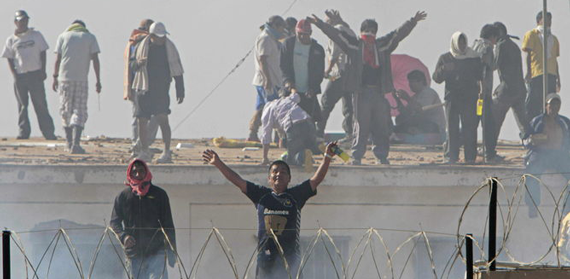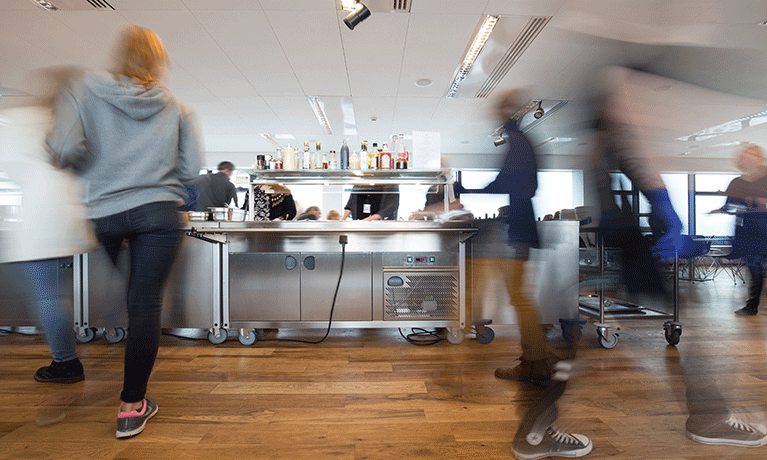Image: Reuters/Henry Romero
Guest Post by Neil Pyper
The recent escape of Mexican drug cartel leader Joaquín “El Chapo” Guzmán from a Mexican maximum-security prison was a high profile example of the failings of prison systems throughout Latin America. His escape through a 1.5km tunnel made a mockery of the jail’s security and also raised serious questions about corruption. Seven prison guards were charged with involvement, and the jail’s warden along with other officials were dismissed.
Peru’s prison system has also faced international scrutiny, but for other reasons. The conviction of Scottish and Irish teenagers Melissa Reid and Michaella McCollum Connolly last year drew attention to the prison’s poor conditions. The country’s position as a drug trafficking hub means that it holds the largest number of UK prisoners in Latin America, and the largest number of Spanish overseas inmates.
These two high profile cases exemplify the failings of Latin American prison systems. But they also reveal some more positive developments they’ve had in recent years.
Harsh conditions
The region’s prisons suffer from severe overcrowding. Often authorities are limited to patrolling the exterior of facilities, while inmates themselves are in charge of everyday life. Ten countries in Latin America are operating prison systems at more than 200% capacity. Many play host to a large proportion of inmates who are awaiting trial – nearly 65% in Venezuela in 2014. Many of these will spend several years in prison before they are even sentenced, sometimes longer than the sentence that is eventually handed down. As well as being an obvious injustice, this exacerbates problems of overcrowding.
Indeed, overcrowding exacerbates violence and adds to what are often fierce gang rivalries. It also means that living conditions are often unsanitary and unsafe – as a fire at a Honduran prison, which killed over 350 inmates in 2012, graphically illustrated.
Economic growth
Nonetheless, many aspects of Latin American societies have benefited from a period of prolonged economic growth due to high international commodity prices and demand. Prisons are no exception.
Peru has been one of the region’s economic star performers, while also historically exemplifying prison problems. Lurigancho jail in Lima is particularly notorious for overcrowding and related health and security problems.
But an aggressive programme of prison building in recent years may change this. New jails such as Ancón 2 on the outskirts of Lima, which opened in 2010 and generally houses first time and non-violent offenders, such as foreign drug mules, do not have the sort of overcrowding seen in older institutions. As a result, conditions appear significantly better, with educational and work opportunities for inmates. The appointment in 2011 of a prisons specialist to lead the prison service has also led to better management and a more systematic classification of offenders.
These sorts of initiatives can also be seen elsewhere in Latin America. For example, in Costa Rica reformers are working with companies to develop programmes to reintroduce inmates back into society. The Dominican Republic has also become known as a leader in this area, with a programme to build model prisons that focus on rehabilitating inmates.
Unforeseen consequences
This approach has had a number of unforeseen consequences, however. As El Chapo’s escape illustrates, corruption, incompetence, or some combination of the two, will undermine any investment in security or facilities – particularly given the power that drug cartels and organised criminals can wield. Perhaps more fundamentally, warehousing hardened offenders in chaotic and severely overcrowded institutions exacerbates problems of criminality, especially when corruption is added into the mix.
For example, there is a severe problem with violent crime and extortion in the large district of San Juan de Lurigancho, where two of Lima’s main prisons are located. A significant amount of extortion activity that targets the district has been organised from within Lurigancho prison. Mobile phones are smuggled in, and people living near the jail sell their internet connections to inmates.
Peruvian authorities have installed mobile phone signal blockers in a number of jails, and plan to do so at Lurigancho and others in the near future. But these have frequently failed to work in the past, either for technical reasons or because inmates bribe authorities to switch them off. This raises the question of whether the latest investment in signal blockers will be any more successful.
Entrenched problems
Even at Peru’s new prisons, care in the design of facilities, classification of inmates, and prevention of overcrowding have not been able to prevent corruption. Indeed, inmates at Ancón 2 have reported that this remains endemic and that drugs are widespread, smuggled in by prison staff. This suggests that even the new jails continue to fall well short of the aspirations of the administrations that built them.
Clearly, these are deeply entrenched problems that suggest a need for cultural change within prison systems and other state authorities. This means that, even though training for prison guards in Peru has been professionalised in recent years, it will take time to root out deeply ingrained bad practice. The recent discovery of swimming pools and inmate-run nightclubs serving alcohol in Lurigancho prison serve to illustrate this.
The apparent slowdown in the region’s growth over the past couple of years, calls into question whether recent spending on prisons will be maintained. At the same time, the public is increasingly aware of the security threat posed by porous prisons, especially given wider concerns about organised crime and gang violence. This means that the issue will have an increasingly high political profile throughout the region, with pressure for more effective action.
Originally written for ‘The Conversation’.





Comments are disabled